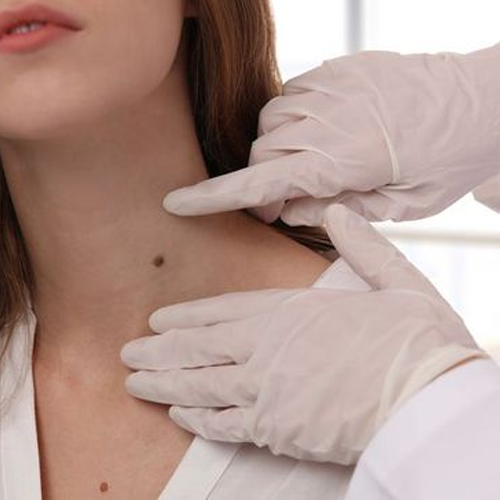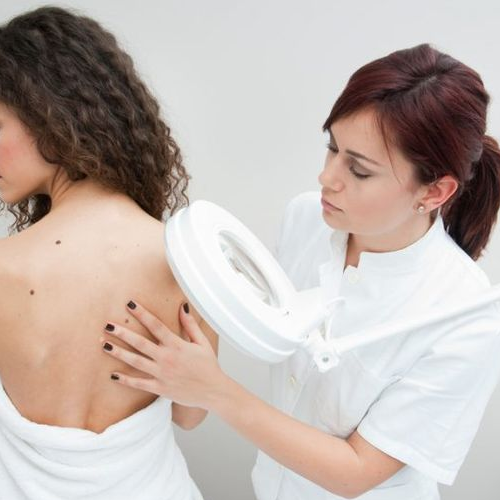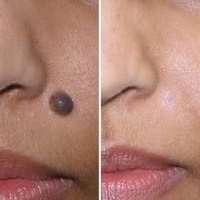Service
MOLE REMOVAL
Best Mole Removal TREATMENT in Islamabad
There are different types of moles. While most of the times the moles are harmless, there are a few which could be cosmetically unappealing or very rarely may become cancerous. With age, some of the moles disappear and few others change their color or may grow in size.
Why Us ?
- Mole removal at Cosmetic Laser & Skin Clinic is outstanding because –
- We have Experienced dermatologists.
- Set and tested protocols and stringent guidelines assure safety and efficacy.
- At Cometic laser & Skin Clinic, we offer customized mole removal treatment for every client
- Free consultation with the doctor and rigorously trained therapists.
- We have served thousands of mole removal treatments and have gained immense client satisfaction rating of 91%.
How does Mole Removal work?
A mole can usually be removed by a dermatologist in a single office visit. Occasionally, a second appointment is necessary. The two primary procedures used to remove moles are:
- Shave excision. For this procedure, your dermatologist uses a thin, razor-like tool to carefully slice away the mole. A device with a tiny electrode at the end may be used to perform electrosurgical feathering.
- Surgical excision. This procedure is deeper than a shave excision and more like traditional surgery. Your dermatologist cuts out the entire mole and below to the subcutaneous fat layer, and stitches the incision closed. The mole will then be examined for cancer cells.


How does Mole Removal work?
A mole can usually be removed by a dermatologist in a single office visit. Occasionally, a second appointment is necessary. The two primary procedures used to remove moles are:
- Shave excision. For this procedure, your dermatologist uses a thin, razor-like tool to carefully slice away the mole. A device with a tiny electrode at the end may be used to perform electrosurgical feathering.
- Surgical excision. This procedure is deeper than a shave excision and more like traditional surgery. Your dermatologist cuts out the entire mole and below to the subcutaneous fat layer, and stitches the incision closed. The mole will then be examined for cancer cells.

Why home removal is harmful?
A few
Removing moles by cutting them off with a sharp object like scissors or a razor blade carries risks, too. Cutting off any growth increases your risk of infection, especially if the tool you use isn’t properly sanitized. You can also create a permanent scar where the mole once was.

Why home removal is harmful?
A few
Removing moles by cutting them off with a sharp object like scissors or a razor blade carries risks, too. Cutting off any growth increases your risk of infection, especially if the tool you use isn’t properly sanitized. You can also create a permanent scar where the mole once was.
Why Mole Removal Treatment?
Minimal Side Effects
Temporary discomfort, redness and swelling are possible after Mole removal. Any signs and symptoms typically disappear within several days.
Permanent Results
Most patients will not see a return of their mole over time because the pigment that is destroyed.
Mole Removal In single Visit
At Cosmetic Laser & Skin Clinic, you don’t have to wait for mole removal to get session like other clicnics. Just one visit and problem solve.
Fast Results
Results will be evident after your first treatment, usually because the mole will appear flatter and lighter in color.
MOLE REMOVAL TREATMENT






FAQs
IS THE PROCEDURE PAINFUL?
WHAT IF THE MOLES ARE LARGE?
HOW LONG DOES IT TAKE TO HEAL?
WHAT ARE THE MOLE REMOVAL TREATMENTS AT COSMETIC LASER & SKIN CLICNIC?
Moles become a concern for cosmetic reasons when they stand out on the skin or when they have a potential to become cancerous. Moles can be treated either by a minor surgical procedure called radiofrequency or electrocautery, punch excision or through Q switched YAG laser. Sometimes, a combination of treatments may be needed.
What causes moles?
Simply put, moles are caused by abnormal growth cells in the skin. However, abnormal growth doesn’t always mean cancer. Overall, moles are extremely common, with the American Academy Dermatology (AAD) estimating an average of 10 to 40 moles per person.
Should You Be Worried About a Mole That Returns?
Not necessarily. Some patients do have moles that return after removal treatments, which is generally caused by a few mole cells being left behind by the treatment.

